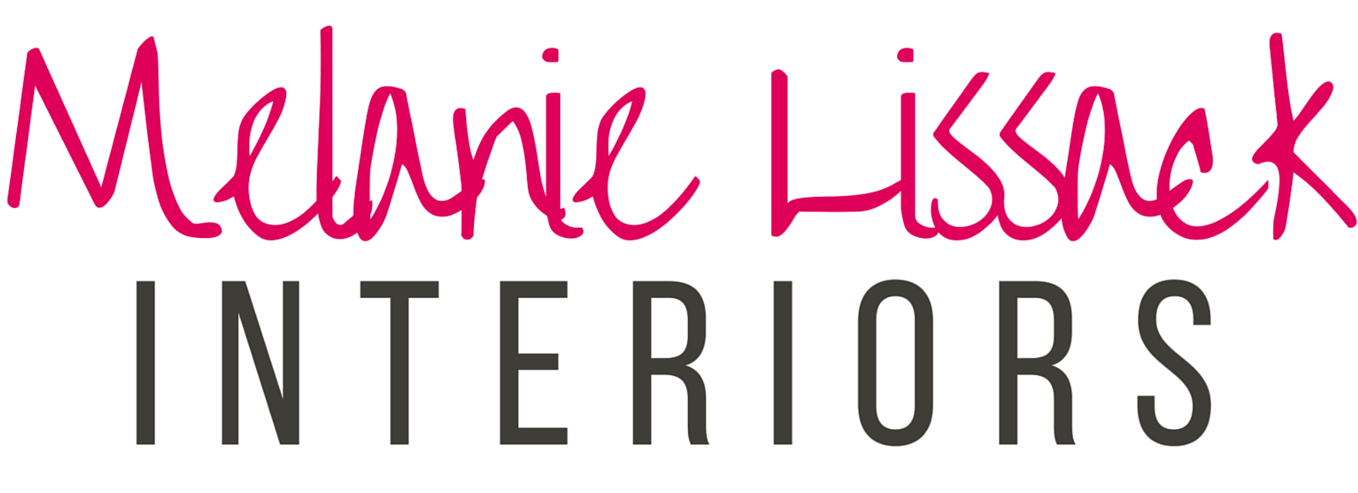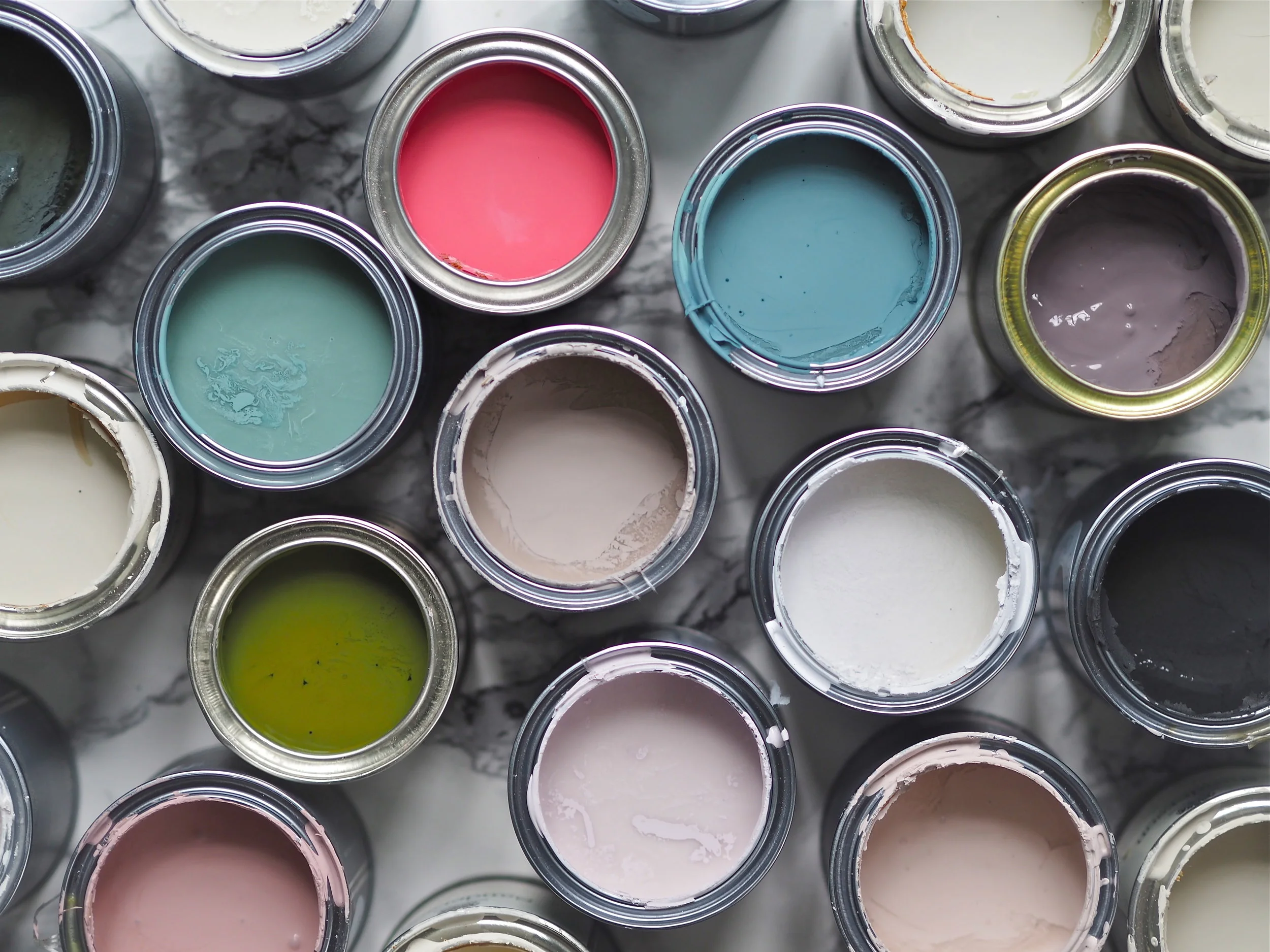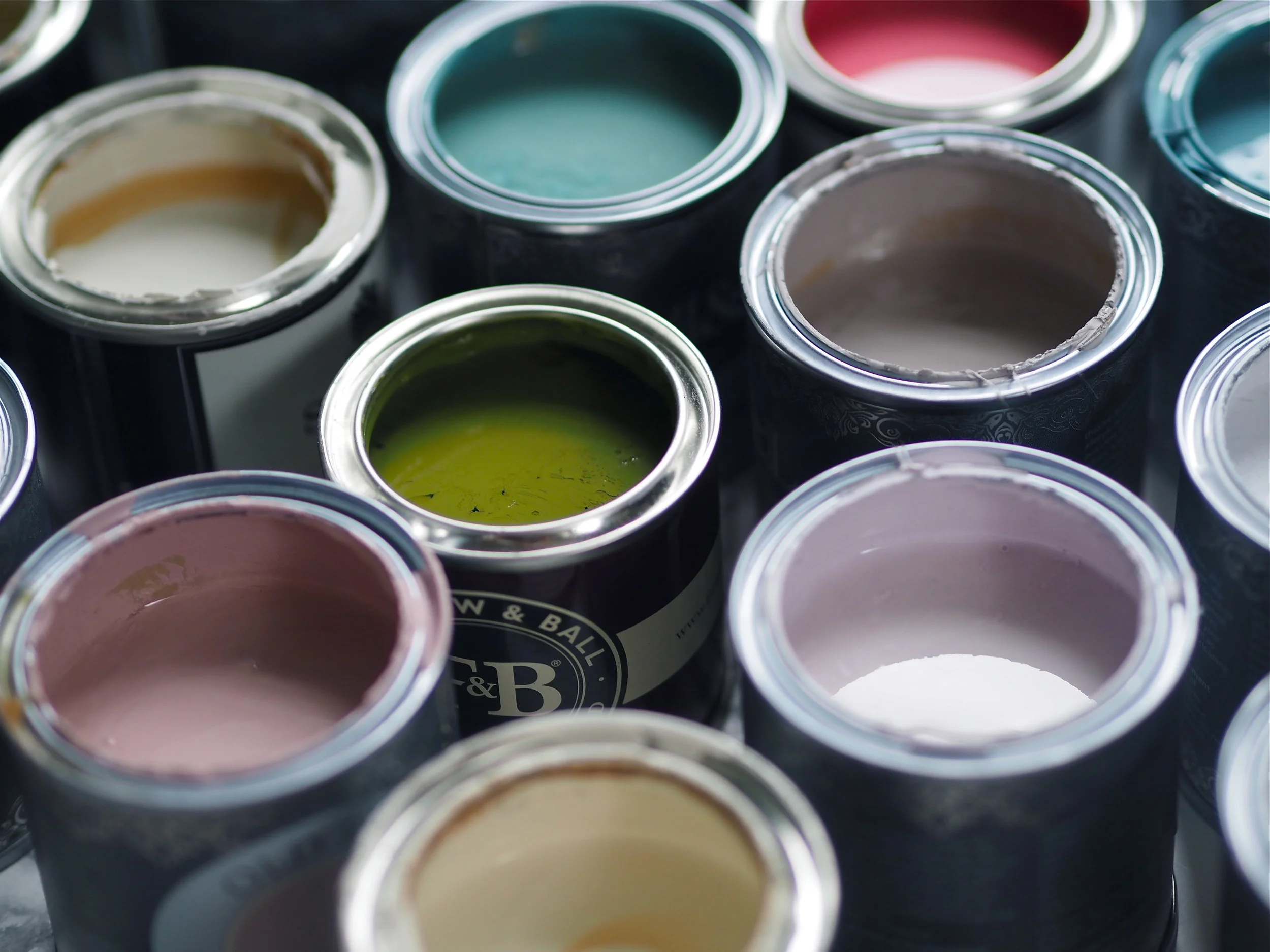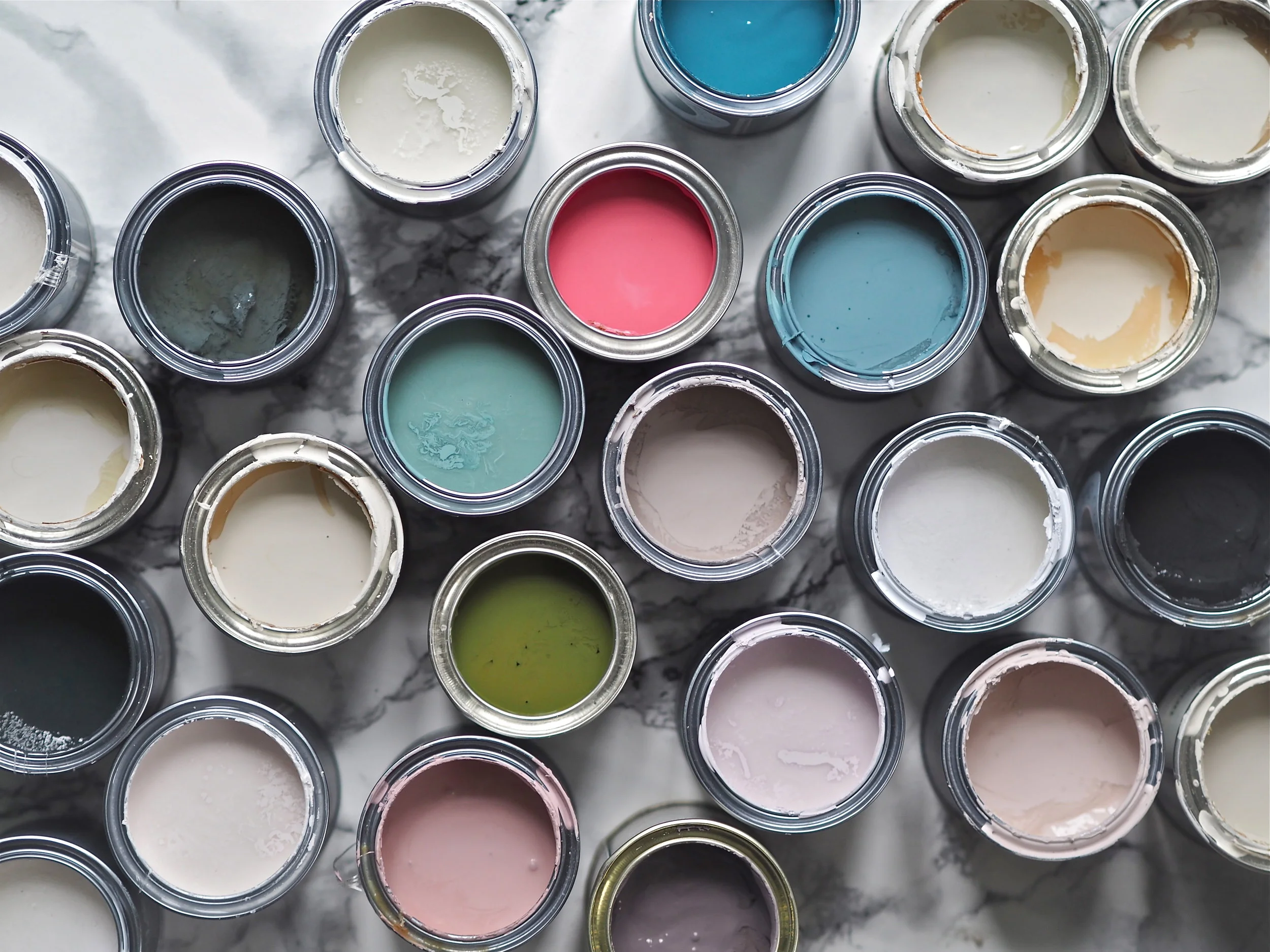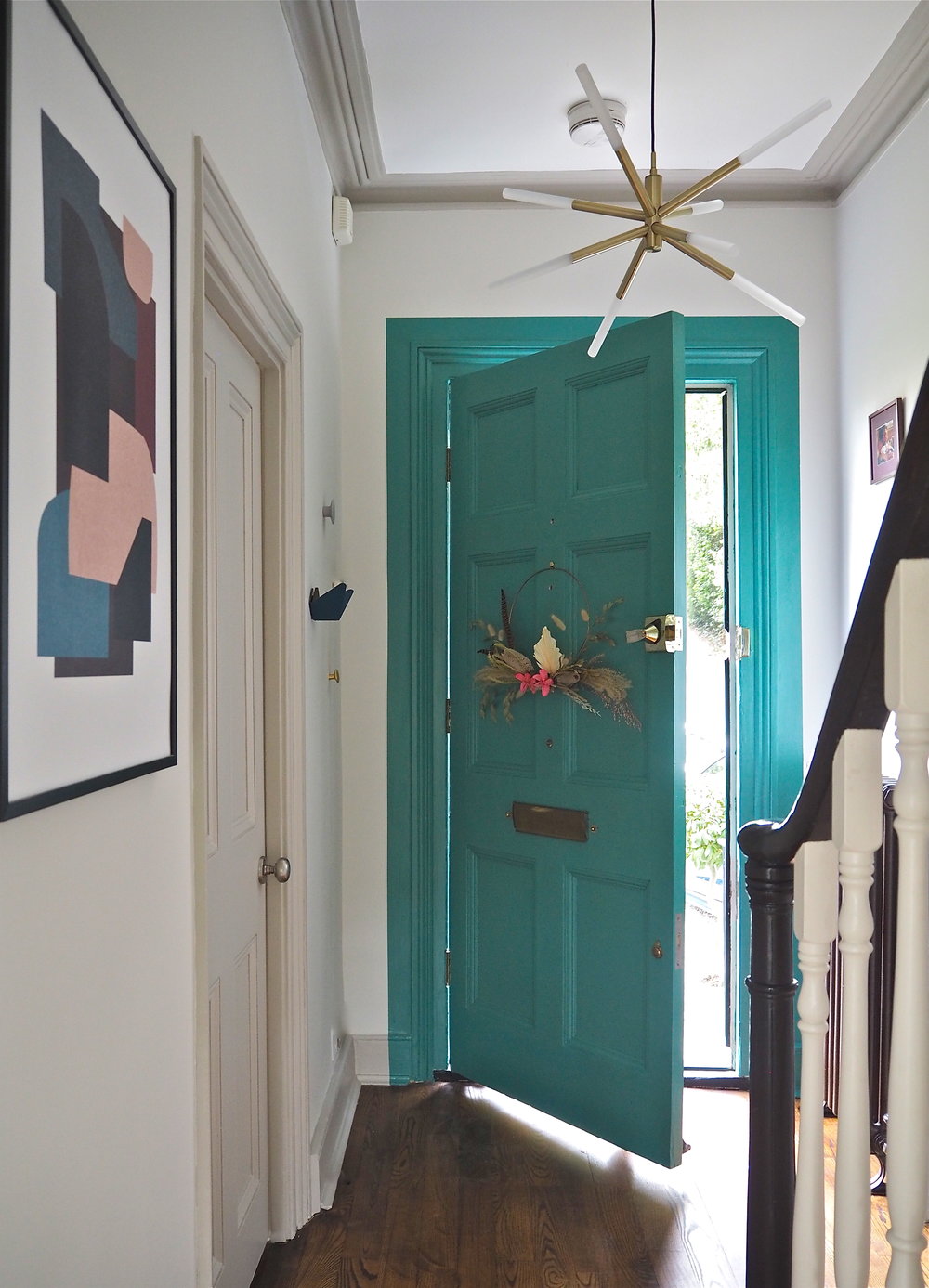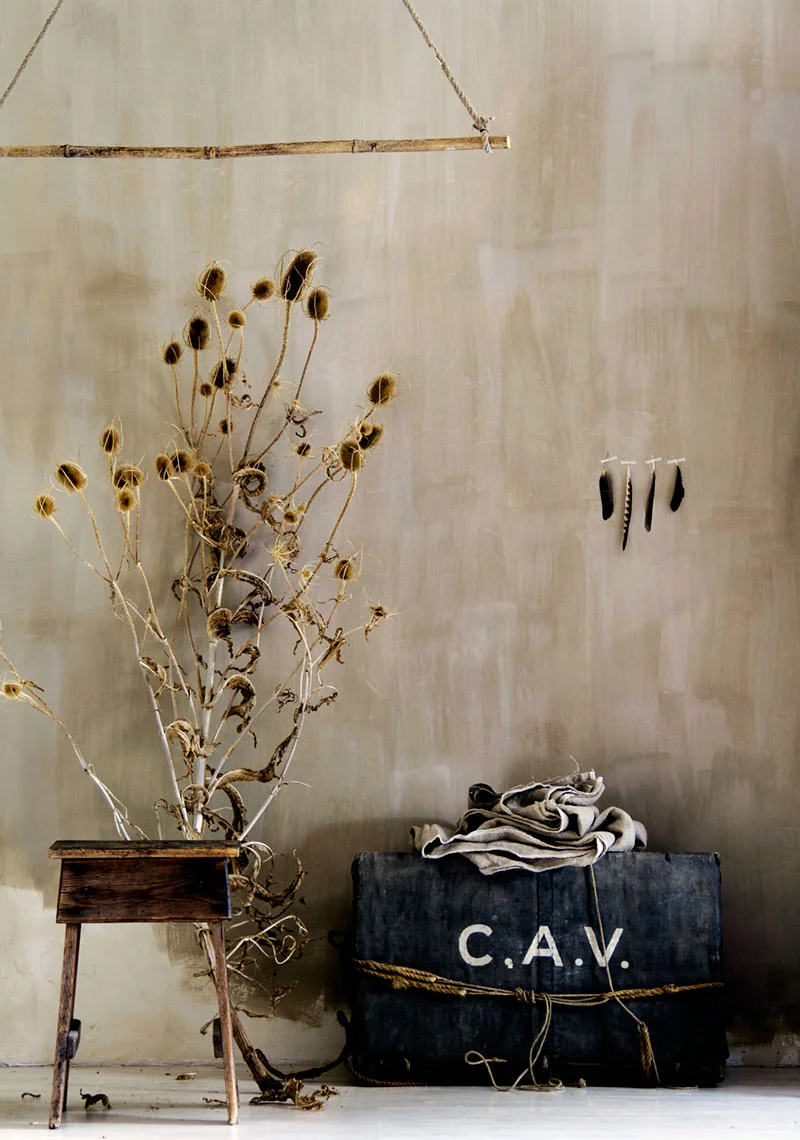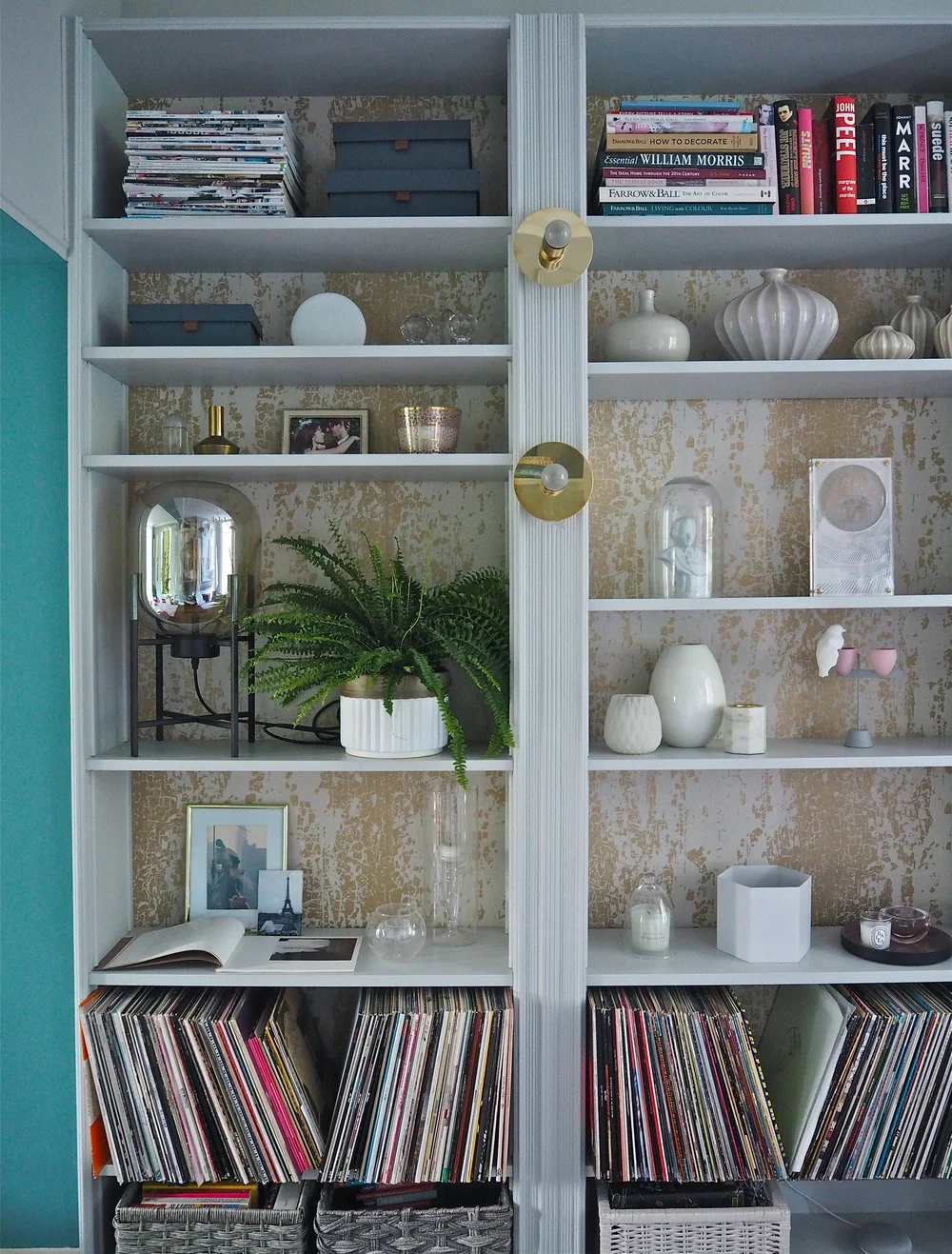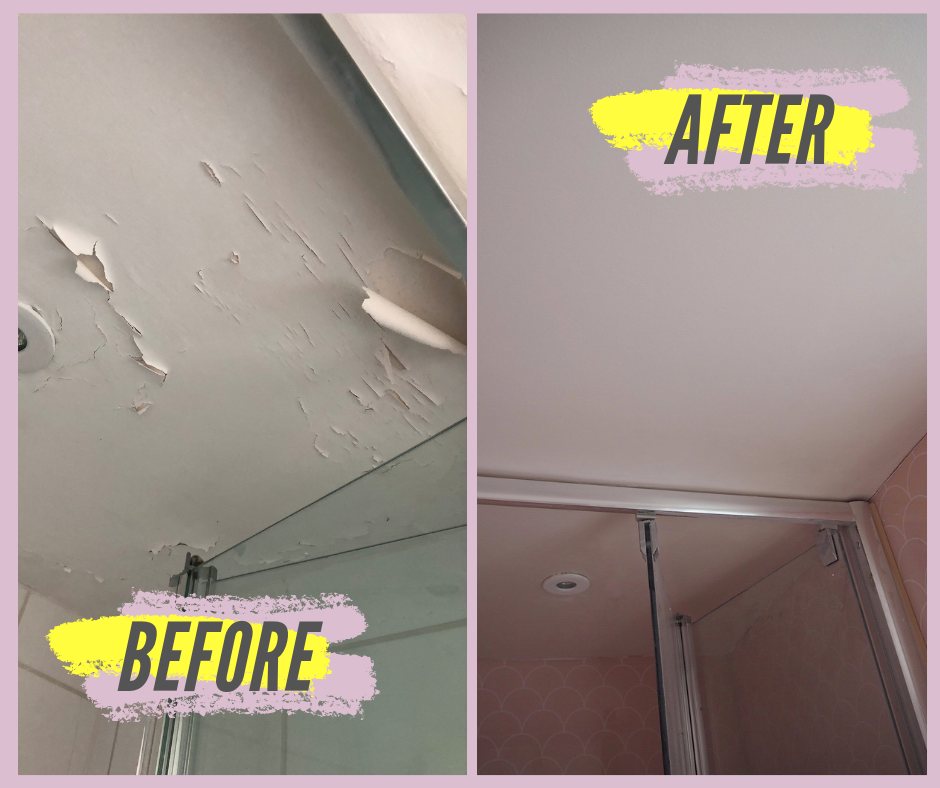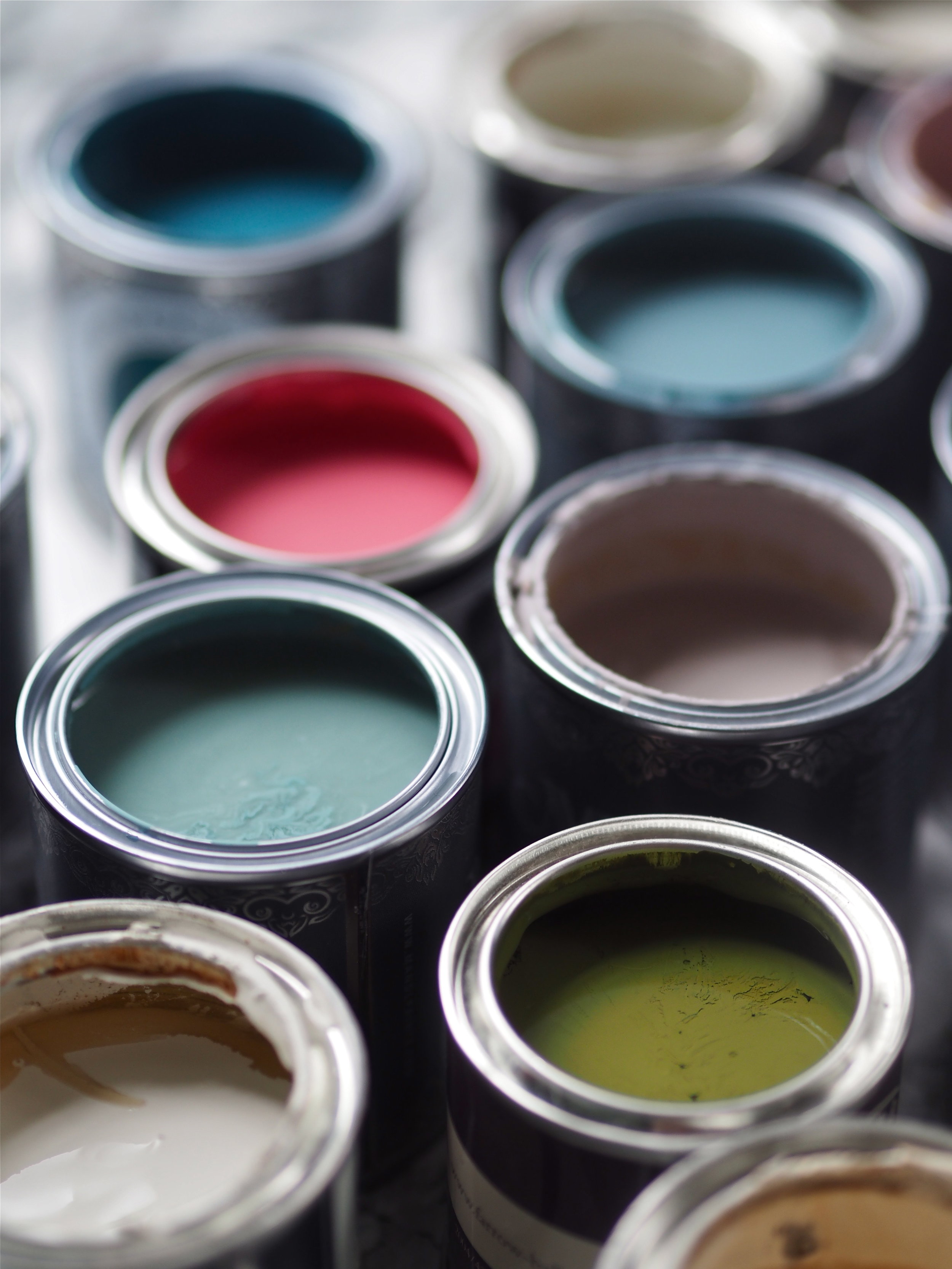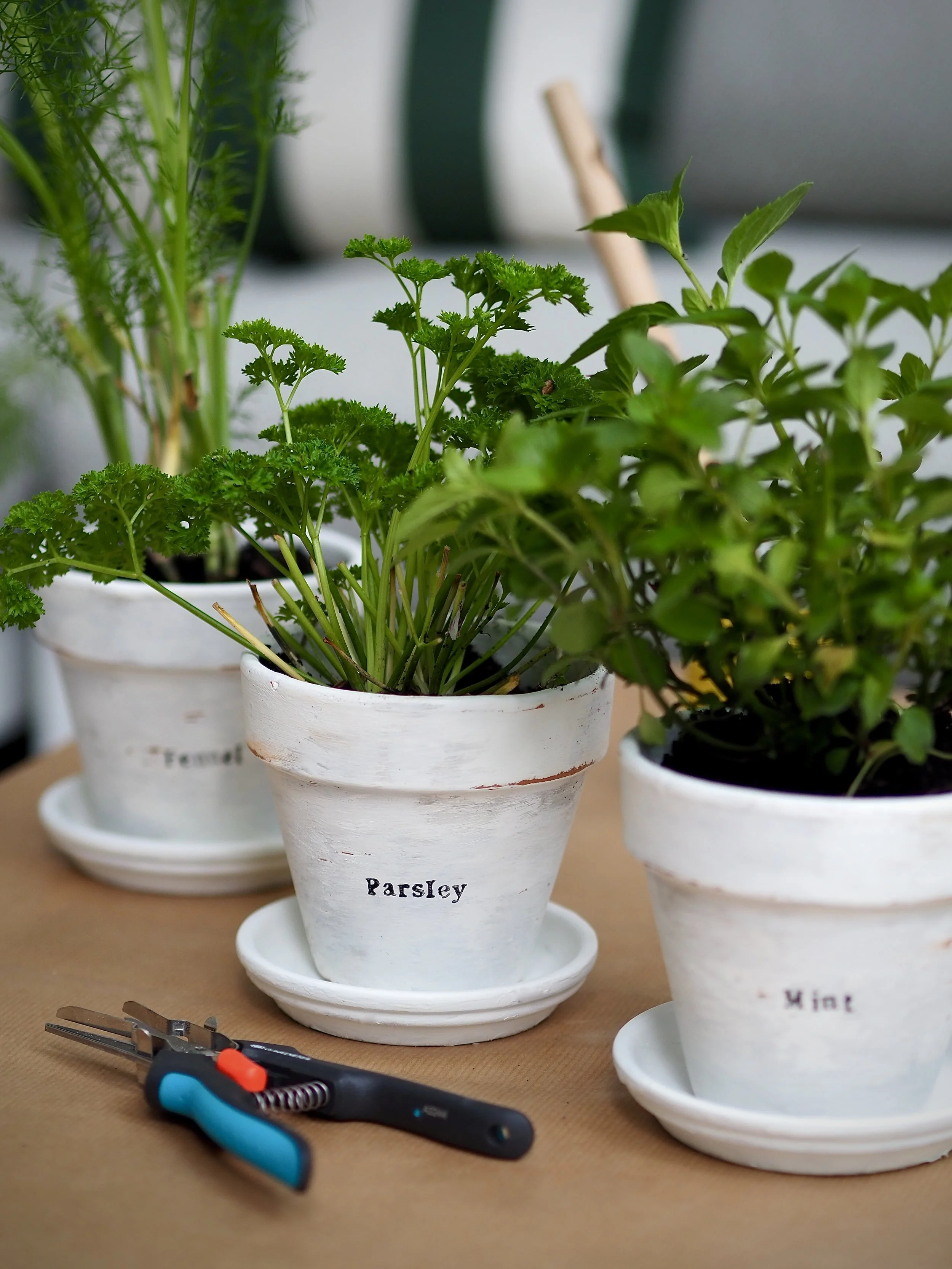What Type Of Paint Finish Should I Be Using?
Without a doubt, the questions I get asked about the most are all centred around paint: what’s the best type of paint to use on radiators? What paint should I use on windows? Should I use gloss or eggshell? What paint is best with kids and pets? So, in order to round up all these questions, I’ve decided to dedicate an entire blog post on the types of paint you can buy, the different finishes they come in, and where you should use these paint types in and around your home.
First of all, I should say that the result of any paintwork is only as good as the time you put into the prep work. Prep work is so boring, but it’s absolutely key to getting a perfect, non-chip finish. All surfaces should always be filled if there are any cracks or holes with an appropriate filler (there are a wide range of fillers available that are suitable for hairline cracks through to large chucks of missing plaster). Any filled areas or uneven surfaces should be sanded down with light sandpaper and then gently washed down with sugar soap to get rid of stubborn dirt to provide a clean base to paint on (do not be tempted to just use a rag and a bit of water as there may be grease marks not visible to the eye that will soak through your new paintwork). I actually really rate sugar soap wipes that make the job so much easier than the conventional spray and microfibre cloth.
If what you are painting is in quite a bad way and there are problem areas like patching or staining, you need to apply a primer or an undercoat first before your top coat to achieve a good end result (this is especially true if you are going to use a really dark colour, or if you are painting over a previously darker hue). This is quite a random comparison, but it’s a good one: If you wear make-up, an undercoat basically acts like a foundation primer - it smooths out the surface, fills in any large pores and you get a perfect, even, smooth top-coat finish with your foundation that stays put all day!
Any previously painted, shiny surfaces like skirting and doors need to have the sheen completely removed before you apply any new paint. A hardy, durable eggshell will still chip if just painted over a previously glossed surface. If you really do not want to do a full sand back (and who does -heavy sanding is really messy, hard work) then give the area a light sand with some paper and use a primer called Bulls Eye 1-2-3 by Zinsser. Bulls Eye provides an amazing adhesion for hard-to-stick surfaces without the need for heavy sanding; it’s also a stain block and good for getting rid of marks and knots found in wood that can leak through paint. You also need to prime if you are painting a previously non-painted surface or something like plastic or metal (especially radiators), so that your paint isn’t absorbed or chippable.
So, that’s the prep, what about the paint? As well as a general tin of basic matt emulsion, there are a wide range of paint finishes available for different projects around the home that come in a variety of sheen and durability levels- from high-traffic areas to upcycling furniture.
If you go into a DIY store and say you want to paint a wall or ceiling they will point you in the direction of basic emulsion paint. However, there is more than one type of emulsion and the type you use should depend on the sort of finish that you want and the area that you are painting. A general emulsion - which can be known as Estate Emulsion, Intelligent Emulsion, Dead Flat or simply Matt Emulsion - offers a chalky, flat finish with hardly any sheen provides a lovely look and is generally the most preferred overall paint finish. What it doesn’t offer, however, is washability, so if you are painting a high-traffic area like a hallway or a playroom you should instead look to more advanced emulsion paint. Advanced emulsions (also known as Modern Emulsion, Silk, Architect’s Matt or Intelligent Matt) can be scrubbed and washed down with no adverse effects such as marking or paint removal). In terms of the end result, advanced emulsions provide a slightly higher level of sheen (Farrow & Ball’s Estate Emulsion has 2% sheen, whereas the Modern has 7%).
Scandi paint brand Jotun Lady is an extremely flat matt emulsion paint. Image credit: Jotun Lady.
Never be tempted to buy one large tin of emulsion and paint the walls, skirting, radiators and doors all in the same paint! Wood and metalwork in a room work harder as things like the skirting get knocked by the hoover, while the window frames can get dirty and need cleaning regularly. For wood and metal, you’ll need a more durable paint called ‘eggshell.’ You can also paint woodwork in gloss or satinwood, but that is a very dated, 80’s style high-shine look so you are better off going for eggshell (unless you do gloss right - see below for my guide to gloss!) Again, you can get eggshell that is lower in sheen (although it will always be a higher sheen than emulsion), or a higher sheen that is more durable. Use the most durable eggshell on those things that will get the most use such as staircases, kitchen cupboards, shelves and furniture; use the less durable version on skirting and doors that won’t take so much of a daily hit.
You will also find that you can buy eggshell paint as water or oil-based. Water-based eggshell is more environmentally friendly, dries a lot quicker, doesn’t smell and won’t stay on your hands for over a week if you get it on your skin. Oil-based eggshell takes forever to dry, but the durability is way up there as the best (Farrow & Ball stopped producing oil-based eggshell a good few years ago for water-based only and I know many professional kitchen cabinet painters initially refused to use Farrow & Ball going forward as the chip factor was way higher - they felt it would fall back on them as a bad paint job). Personally, I used oil-based once for a project and I hated it. The chemical-heavy smell lingered for ages and it took two days for one coat to be touch-dry! I have to say though, 10 years on, there’s not one chip on that kitchen island painted in oil-based!! Little Greene Paints and Paint & Paper Library still sell oil-based eggshells if you would prefer your paint as hard-wearing as possible.
I painted the back of my front door in ‘Niblock’ Eggshell Paint by M&L Paints.
Full gloss paints give the most shiny-sheen going and generally are used on the exterior of doors to give a gorgeous clean and shiny welcome. As mentioned, a lot of people used to use gloss on interior woodwork, but that high-shine look can be dated unless you do it right! There is now a massive comeback for gloss with people being really clever with how they use gloss in their homes. In the picture below - lifted from the latest book by Farrow & Ball titled ‘Recipes For Decorating’ - the hallway is all painted in the same colour, but the top is in a matt emulsion and the bottom is painted in gloss (this is really clever, as it is practical as well as being interesting to the eye as gloss is a super-durable, wipe clean paint).
Gloss is excellent to use to make a ‘feature’ without pattern or wallpaper. It’s also really on-trend now to paint ceilings in gloss so the light reflects and bounces around the room without having shiny walls. You can use gloss on pretty much everything, but it is totally dependent on if you want this high-shine finish or not. The end result is amazing, but be warned - gloss shows off every imperfection and it’s not the easiest to apply without visible brush marks. To call in a professional, consider interior painting Melbourne.
This gloss paint is Deep Brunswick Green' from Papers and Paints in the London home of journalist Rita Konig. Image Credit: Paul Massey for House and Garden Magazine.
There are paints available for specialist finishes for historic properties and also to create particular effects. If you are converting an old church or a really, really old building, then you want to look into finishes that have breathable qualities. These eco-friendly, breathable paints are also good for being child and pet safe. If you simply want to create a more vintage look, Limewash paints or specialist effect paints mean you can transform a basic room into a Parisian apartment with a few applications.
Image credit: Bauwerk Paints.
One of the biggest mistakes people make is to paint built-in units, melamine IKEA furniture and shelves in emulsion paint. Anything that is going to be touched a lot or have stuff placed on it should never be painted in emulsion. For shelving and other built-in bits around the home - whether it be made from wood, MDF or melamine - I would advise priming with Zinsser B-I_N and then eggshell paint. Once you’ve painted it in eggshell do not place anything on the surface for at least a week (maybe less if it’s really hot) as there is a difference between paint being ‘dry’ and it being ‘cured’. Paint being dry means you can touch it and it does not feel wet, while paint being cured means it has reached it 100% maximum hardness level and will not mark or chip when items are placed on it.
These hacked IKEA Billy Bookcases I painted in Earthborn Paints Eggshell paint (after two coats of primer) so they were the same colour as the walls.
For freestanding furniture, you have the option to upcycle with chalk, milk, spray paints, eggshell or gloss paint. Eggshell paint gives you a wider colour choice, but chalk paint and spray paint are so easy and simple to use and often you don’t need to prime (winner). Always check the label on the back of the tin to tell you what you need to do! Try Annie Sloan for chalky furniture paints and craft supply stores for a wide range of spray paints.
Specialist areas need specialist paint away from the general ‘colour card’ paint companies who tend to offer paint for walls, ceilings and woodwork only. For areas with high humidity that lack ventilation, I would not advise kitchen and bathroom paint which is just not up to the job. Instead, get a specialist high humidity paint tinted to the colour you require (paint colours are distinguished and colour-matched by RAL codes, which specify the formula to create a certain shade). I would advise purchasing Zinsser Perma-White (and get it tinted if required) or Tikkurila Luja 7 (which I wrote all about using here). Your local decorator merchants can supply this paint to you (I know these places can be a bit unnerving if you are not a trade professional, but if you find a helpful one they are worth their weight in gold).
I solved the problem of my bathroom ceiling constantly peeling by using the right paint for humid rooms.
For problem surfaces like UVPC, concrete, brick, rubber and vinyl I would visit the Rustoleum website as a good starting point. Rust-Oleum are the leaders in a wide range of primers and paints for all sorts of problem-paint products and they have a handy ‘search by surface’ drop-down tool so you can find the right product for your job.
You will not be able to use the same paint outside as inside as exterior paint needs to be able to withstand the elements. Generally, you use masonry paint on the walls, exterior eggshell on the windows and the doors and full gloss if you want a super shiny front door (but lots of people are going for a matt finish these days with a flat eggshell paint). If you just want white walls and a blue/red/green front door or windows you are better off saving yourself money and going for Dulux Weathershield which does the job for a good price. If you own a period property then your building will need to breathe, so look towards paint companies like Graphenstone which are also eco-friendly. Exteriors are now moving forward with charcoal or inky-coloured window frames and if you want to have a house that stands out from the rest on the street, companies like Little Greene and Farrow & Ball offer all the colours in their palette as exterior options.
Image courtesy of Rightmove.co.uk.
So there you have it - prep, prime, then use the right paint for the job. If you have any further paint questions that I haven’t covered in this post, please do leave them in the comments box below!
